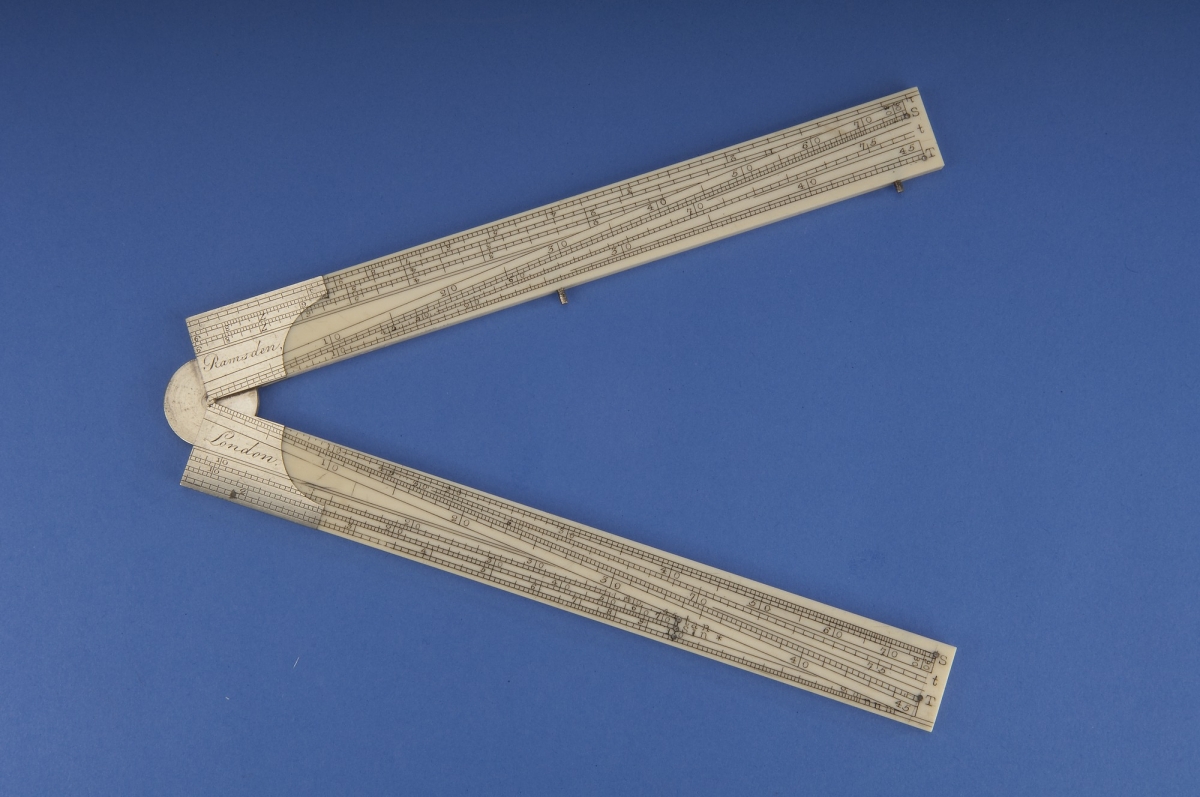- About MAA
- Membership
- MAA Publications
- Periodicals
- Blogs
- MAA Book Series
- MAA Press (an imprint of the AMS)
- MAA Notes
- MAA Reviews
- Mathematical Communication
- Information for Libraries
- Author Resources
- Advertise with MAA
- Meetings
- Competitions
- Programs
- Communities
- MAA Sections
- SIGMAA
- MAA Connect
- Students
- MAA Awards
- Awards Booklets
- Writing Awards
- Teaching Awards
- Service Awards
- Research Awards
- Lecture Awards
- Putnam Competition Individual and Team Winners
- D. E. Shaw Group AMC 8 Awards & Certificates
- Maryam Mirzakhani AMC 10 A Awards & Certificates
- Two Sigma AMC 10 B Awards & Certificates
- Jane Street AMC 12 A Awards & Certificates
- Akamai AMC 12 B Awards & Certificates
- High School Teachers
- News
You are here
Online Museum Collections in the Mathematics Classroom – Sectors and Proportional Triangles
Classroom Application #6: Sectors and Proportional Triangles
Mathematical instruments that are called “sectors” are usually made of two arms, or rulers, of equal length. The rulers are joined by a hinge and marked with various proportional, numerical, trigonometric, and logarithmic scales. Distances between or within scales are measured with a pair of dividers, a drawing compass with points at the end of both legs. Problems are solved by creating similar triangles based on these distances. Sectors were used from the late 16th century to the 19th century, when they were supplanted by slide rules and other instruments. The National Museum of American History (NMAH) owns examples of three main types of sectors, those made on the Italian peninsula, those made in France, and those made in England. As with any of the object groups, images can be easily downloaded to illustrate classroom presentations.

Sector in the English style, signed by Jesse Ramsden, 1765–1800, Smithsonian Institution negative number DOR2012-2586.
It takes some imagination for instructors to extend the information found in the sectors object group. Unlike some calculating and drawing instruments, it is not easy to procure historic sectors. Brass Italian and French sectors usually sell for hundreds of dollars, wooden English sectors are rare since they were often destroyed by heavy use, and recently-increased restrictions on the sale of ivory make it impossible for Americans to buy or sell ivory English sectors. Also, almost no one has written about how to make replica sectors or scales. One of the editors of Popular Woodworking Magazine has posted a video demonstrating how to convert a folding ruler into an oversized wooden sector with a “line of lines” scale (for solving proportionals and for dividing a line into any number of parts). The online Slide Rule Museum has printable scales for making slide rules, which can be adapted to teaching about sectors by editing for the logarithmic, numerical, and trigonometric scales. There are rules for calculating the scales at the bottom of the page. Some early modern works on sectors have been digitized for GoogleBooks or the Internet Archive, such as Edmund Gunter’s The Description and Use of the Sector, Crosse-Staffe, and Other Instruments, 2nd ed. (London, 1636). 19th-century English makers' catalogs and manuals on mathematical instruments often have at least a brief account of how sectors are made and used, such as John Fry Heather’s A Treatise on Mathematical Instruments, 2nd ed. (London, 1853).
Amy Ackerberg-Hastings (University of Maryland University College) and Amy Shell-Gellasch (Montgomery College), "Online Museum Collections in the Mathematics Classroom – Sectors and Proportional Triangles," Convergence (December 2014)




